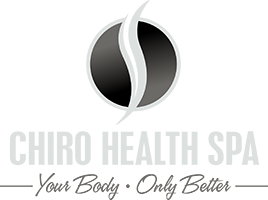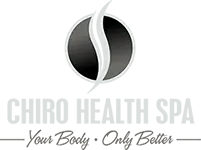Have you had headaches? Having a headache is a very common problem that over 50% of people will report each year. Studies have shown that 4% of people even have headaches more than 15 days per month! There are many different types of headaches, and many different causes of headaches. Some people will have multiple causes and multiple types as well. Let’s first look at the causes of headaches. Most people think first about physical or mechanical causes (injury, whiplash, concussion, pulled muscles, tight muscles, or trigger points). There are emotional causes such a stress or anxiety. There are even chemical causes from medication, alcohol, and foods. Some people even get environmental headaches from weather changes or allergies. Migraine headaches can have any of these causes with a higher intensity. There’s even the most overlooked cause of headaches – poor posture in your head and neck. This can be the root cause of up to 53% of headaches! What’s most important to realize is this: headaches are common, but not normal. Headaches are your body’s way of telling you something is wrong. They are a symptom, not the actual cause. Taking medication might reduce or relieve headaches, but if the root cause of the problem isn’t addressed, stopping the medication will just allow the headaches to return. In our office, we focus primarily on the mechanical and physical causes of your headaches. Improving your head and neck posture might be the first major cause, and others follow because the body can’t relax. This is where our specialty lies – addressing your spinal alignment to make it as neutral as possible.
How We Treat Headaches in Ramsey, NJ
There are countless ways to address headaches but to really find the root cause of the problem, here’s what we do:
Comprehensive Consultation and Exam
We’re going to sit down with you to dig into your history, as many clues come from that discussion. It’s a two-way conversation, as we’re listening intently but providing feedback along the way. During the exam portion, we’ll check things like your range of motion and muscle strength and perform several orthopedic and neurological tests to see where you are compared to normal. This helps us figure out the root cause of your problem.
Computerized Posture Analysis
Your neutral standing posture is one of our most important tools to analyzing where your headaches are coming from. We take pictures of you from front and side, and by placing digital reference points on your pictures we can see in seconds where your body is under the most stress from poor posture. Most people are amazed as to what they really look like!
Digital X-Rays
We use the most up-to-date technology both when taking and analyzing x-rays to know exactly what we are dealing with before we start care. There are three main things we are looking for in your x-rays: degeneration, disc spacing, and how far your alignment is from normal alignment. In the head and neck specifically, we measure how far forward your head is away from your shoulders (known as forward head posture “FHP” or anterior head translation “AHT”), and the amount of curve (or lack of) in the bones when looking at you from the side. We know the normal curve values and positions of the bones, and we match your x-rays up to those normals to evaluate the strength of your spine. Headaches are frequently linked to neck pain, and neck pain is a common symptom of a lack of curve in the neck. All of those factors are important when evaluating how much your neck posture plays a role in your headaches.
Once we have evaluated all of the information, we then choose from several therapies, depending upon your condition:
Specific Chiropractic Adjustments
At its core, the spine wants to be neutral. When bones are out of their normal position (sometimes one in a section of your spine, sometimes several), the result is a gradually weakening posture and pressure on the nerves between the bones. By reducing the misalignments in those areas, the spine gets more freedom of motion, allowing function to improve. If you’ve ever had debilitating headaches, improving this alignment with chiropractic adjustments can be significant in reducing their frequency and intensity.
Custom Therapeutic Exercise Plan
Trying to recover from headaches can’t fully occur if there is muscle weakness or imbalance. If your muscles have been fighting a bad posture for many years (maybe even exaggerated by long hours at a computer), getting them strong is a priority. We often find people with headaches present with limited range of motion in the neck. Therefore, we start by increasing flexibility. Once your range has improved, we then can focus on building your strength. It takes consistency, so we give you a customized exercise plan for both in-office and at home to make sure you’re able to keep aggravating episodes to a minimum, both in frequency and intensity.
Cervical Spinal Decompression
There are occasions where headaches may be caused by a bulging or herniated disc in your neck, putting direct pressure on highly sensitive nerves that can go to the head. In these cases, spinal decompression is a highly effective therapy which gently pulls your head up away from your shoulders. This allows the muscles in your neck to relax while relieving the disc pressure on your nerves. As with exercise, consistency of decompression is important to change muscle patterns that have been set in for a long time. But the results, in conjunction with spinal adjustments and your customized exercises, can be significant.
Electrical Muscle Stimulation
In the initial stages of care, we are looking to reduce muscle spasm and tension in the neck and shoulders. Electrical muscle stimulation is used to accelerate that process, allowing you to feel better and alleviate the neck stiffness often associated with headaches. Most people say e-stim feels like a light massage and often comment how much looser they feel when it’s done.
Posture Rehabilitation
If your headaches improve but your posture is still poor, the likelihood of having relapses is high. Putting in a plan to create and stabilize good, strong posture is your key to having the longest-lasting results. We’ll utilize various forms of traction to put your posture in the “mirror image” – essentially, the exact opposite posture that you currently have. (Let’s face it – that posture isn’t helping you, or you wouldn’t have headaches!) By performing mirror image exercises and traction, your body will gradually learn what “correct” posture is. Each time in-office and at home that your body goes into the mirror image, it’s another signal to the brain, your bones and your muscles to dump the old, bad patterns and create new, stronger patterns. This may be the most overlooked aspect of headaches; there’s no way a weak posture can help you get better.
Acupuncture
Acupuncture can help remove negative energy and restore positive energy throughout your body. By focusing on specific points and zone in your body, endorphins (the “feel-good” hormones) get released, and that triggers a positive response throughout the body. Acupuncture has been used for both acute and chronic headaches and can be very beneficial, either on its own or in conjunction with chiropractic and postural rehabilitation.
Supplements and Other At-Home Remedies
Depending on the cause of your headaches, certain nutritional supplements may be worthwhile. However each case is different, which means your nutritional recommendations may be quite different than someone else you know with headaches. We’ll often recommend certain topical gels or ointments to relieve muscle tension and reduce pain. Some of our recommendations can even be purchased in your local grocery store or health food store.
Lifestyle Changes
Given that we’re working for 8-10 hours a day and sleeping 6-8 hours, whatever posture you’re in had better be right for that amount of time! It’s important that you know how to sleep and how to sit at your computer, and just as important knowing what not to do. Sometimes simple shifts make the biggest differences, and that’s especially true when it comes to your daily habits. We’ll make sure you know what those shifts are to avoid injury and get the best results in our office.
Common Types of Headaches
Headaches come in many different styles. Remember, headaches are common, but not normal. Here’s a few of the ones we see most frequently:
Tension Headaches
Typically start out in the temples and run around the head in a band-like pattern. They frequently start due to previously tight muscles and/or spinal dysfunction, which are aggravated by emotional or physical stress. These are the most common type of headache.
Migraine Headaches
These are a more severe type of headache, so much so that they can nausea, vomiting, and sensitivity to light and sound. The pain is often throbbing and extreme, often on one side of the head. Some types even have an “aura” about 30 minutes before the headache actually comes.
Cluster Headaches
Cluster headaches are known to typically be more painful than tension headaches. They often will wake you up in the middle of the night with pain in or around one eye or one side of the head. They are named as such because they come in cluster periods that can last weeks to months, followed by periods of remission.
Cervicogenic Headache
Cervicogenic (which literally means “starting in the neck”) headaches frequently feel as though they are starting in the back of the head and wrapping around to the front. They frequently are secondary to another cause, such as degeneration in the neck bones, and present with pain and stiffness in the neck.
Whiplash Headaches
These are similar in presentation to cervicogenic headaches but have a definite known cause. Whiplash headaches occur after car accidents or other injuries and get worse with moving the neck. They can also be accompanied by concussion-type symptoms, such as nausea or dizziness.
Frequently Asked Questions About Headaches
When should you see a chiropractor for headaches?
There’s no wrong time to see a chiropractor for headaches. Whether they have been going on for a short time or chronically for years, an evaluation of your spine and overall posture will benefit at any point.
Is a massage or chiropractic better for headaches?
Massage will typically be helpful in the acute stage of a headache. Chiropractic can be very effective for both an acute headache and finding the underlying causes of chronic headaches as well.
Is chiropractic effective for migraines?
Chiropractic has been shown to be effective in reducing the intensity and frequency of migraines. Chiropractors also frequently help patients determine how much other triggers affect a person’s migraines, such as diet or stress.
Can poor neck posture cause headaches?
When the head is too far in front of the shoulders, it strains the neck and upper back. Headaches from poor posture are often in the back of the head and come from the neck muscles being overworked trying to get the head and neck to a more neutral position.
What is a natural way to relieve tension headaches?
To relieve tension headaches, use moist heat on the shoulders and neck for 15-20 minutes, followed by slow neck range of motion stretches. If tension is coming from sitting at the computer, get up and take more frequent breaks to avoid eye strain.


